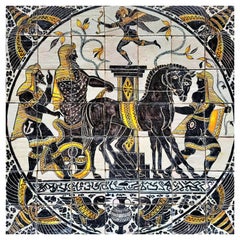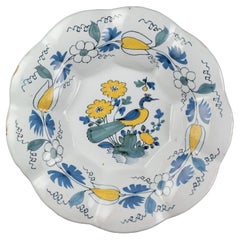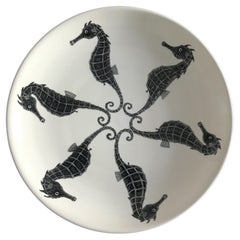Earthenware Ceramics
21st Century and Contemporary Italian Modern Earthenware Ceramics
Ceramic, Earthenware
Late 19th Century Italian Baroque Antique Earthenware Ceramics
Maiolica
21st Century and Contemporary Italian Renaissance Earthenware Ceramics
Ceramic, Majolica
Late 17th Century Dutch Baroque Antique Earthenware Ceramics
Ceramic, Faience
Mid-20th Century English Art Deco Earthenware Ceramics
Earthenware
2010s European Earthenware Ceramics
Earthenware
Late 18th Century Dutch Baroque Antique Earthenware Ceramics
Ceramic, Majolica
18th Century French Antique Earthenware Ceramics
Earthenware
Late 17th Century Dutch Baroque Antique Earthenware Ceramics
Ceramic, Faience
Late 17th Century Dutch Baroque Antique Earthenware Ceramics
Ceramic, Faience
1660s Dutch Baroque Antique Earthenware Ceramics
Ceramic, Faience
Late 17th Century Dutch Baroque Antique Earthenware Ceramics
Ceramic, Faience
1960s Italian Mid-Century Modern Vintage Earthenware Ceramics
Earthenware
21st Century and Contemporary Italian Art Nouveau Earthenware Ceramics
Ceramic, Majolica
1920s Finnish Art Deco Vintage Earthenware Ceramics
Faience
17th Century Dutch Baroque Antique Earthenware Ceramics
Ceramic, Faience
Late 19th Century Italian Baroque Antique Earthenware Ceramics
Maiolica
2010s European Earthenware Ceramics
Earthenware
2010s European Earthenware Ceramics
Earthenware
2010s European Earthenware Ceramics
Earthenware
16th Century Italian Renaissance Antique Earthenware Ceramics
Maiolica
Early 19th Century English Georgian Antique Earthenware Ceramics
Pearlware
21st Century and Contemporary Italian Renaissance Earthenware Ceramics
Ceramic, Majolica
Late 18th Century Dutch Baroque Antique Earthenware Ceramics
Ceramic, Majolica
Mid-18th Century Dutch Baroque Antique Earthenware Ceramics
Ceramic, Faience
1960s Polish Mid-Century Modern Vintage Earthenware Ceramics
Faience
Late 17th Century French Neoclassical Antique Earthenware Ceramics
Earthenware
Early 20th Century French Earthenware Ceramics
Faience
Late 18th Century Dutch Baroque Antique Earthenware Ceramics
Ceramic, Majolica
2010s European Earthenware Ceramics
Earthenware
Early 18th Century Dutch Baroque Antique Earthenware Ceramics
Ceramic, Faience
Late 18th Century Dutch Baroque Antique Earthenware Ceramics
Ceramic, Faience
Mid-17th Century Dutch Baroque Antique Earthenware Ceramics
Ceramic, Faience
Late 19th Century Italian Baroque Antique Earthenware Ceramics
Maiolica
17th Century Dutch Baroque Antique Earthenware Ceramics
Ceramic, Faience
17th Century Dutch Baroque Antique Earthenware Ceramics
Ceramic, Faience
Late 19th Century Italian Baroque Antique Earthenware Ceramics
Maiolica
Late 17th Century Dutch Baroque Antique Earthenware Ceramics
Ceramic, Majolica
21st Century and Contemporary Italian Modern Earthenware Ceramics
Gold
2010s Moroccan Arts and Crafts Earthenware Ceramics
Clay, Earthenware
Mid-18th Century Dutch Baroque Antique Earthenware Ceramics
Ceramic, Majolica
Late 17th Century Dutch Baroque Antique Earthenware Ceramics
Ceramic, Faience
Late 17th Century Dutch Baroque Antique Earthenware Ceramics
Ceramic, Faience
Mid-17th Century Dutch Baroque Antique Earthenware Ceramics
Ceramic, Faience
Late 17th Century Dutch Baroque Antique Earthenware Ceramics
Ceramic, Majolica
Late 17th Century Dutch Baroque Antique Earthenware Ceramics
Ceramic, Majolica
Late 17th Century Dutch Baroque Antique Earthenware Ceramics
Ceramic, Faience
1890s French Belle Époque Antique Earthenware Ceramics
Majolica
Late 19th Century French Japonisme Antique Earthenware Ceramics
Gold
Late 17th Century Dutch Baroque Antique Earthenware Ceramics
Ceramic, Majolica
19th Century French Antique Earthenware Ceramics
Ceramic, Earthenware
Mid-17th Century Dutch Baroque Antique Earthenware Ceramics
Ceramic, Faience
21st Century and Contemporary Spanish Other Earthenware Ceramics
Earthenware, Ceramic, Stoneware
Early 18th Century Dutch Baroque Antique Earthenware Ceramics
Ceramic, Majolica
Mid-19th Century English Victorian Antique Earthenware Ceramics
Earthenware
Early 18th Century Dutch Baroque Antique Earthenware Ceramics
Ceramic, Majolica
1930s French Art Nouveau Vintage Earthenware Ceramics
Majolica



